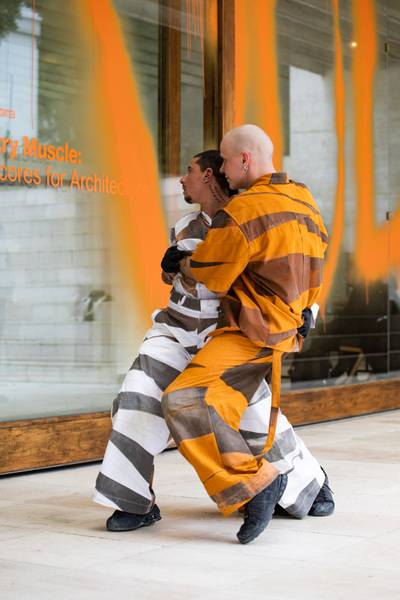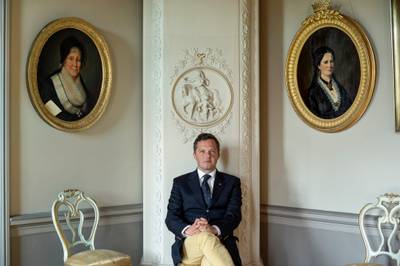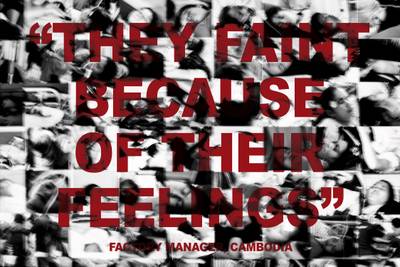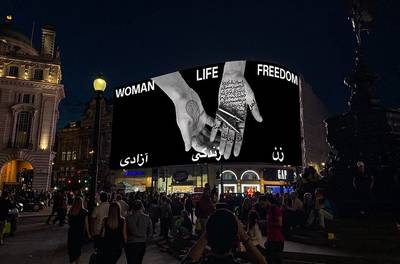

Photo: National Gallery / Pirje Mykkänen
Dr. Timo S. Tuhkanen (they/them) is an Omani born artist-composer and academic working at the intersection between contemporary music, art, and research on the historical and cultural aspects of touch. Currently based in Helsinki Timo is the founder of experimental publishing house Pteron Press, the director of Myymälä2 gallery, Affiliated Researcher at the Department of Music, University of Turku, Artistic Researcher at Angewandte University of Applied Arts Vienna, and is currently the Principal Investigator and founder of Microtonal Music Studios.
ARS22 at Museum of Contemporary Art Kiasma Kiasma, Helsinki | April 8-October 16, 2022
ARS22 brings about significant changes in Kiasma; not only is it the first exhibition after the covid shutdown and the renovation of the building, but it is also the first large-scale project with the new chief curator of temporary exhibitions, João Laia. ARS22, the tenth instalment in the series of major international contemporary art exhibitions launched in 1961, has taken a decidedly new turn under João’s curatorship, including international and historically significant artists, thus collaborating with both living artists and various collections to create the exhibition. Traditionally ARS exhibitions have included only artists living and working in Finland, and it has been seen as a showcase for the newest art happening in the country. With this shift, the exhibition decidedly places Kiasma within the international circulation of contemporary art.
How can we trust if there is no perspective or position?
ARS22’s theme is Living Encounters, and it purports to create a discourse around how “stories bring people together”1. In this sense, the exhibition is very much a ‘metanarrative’ in that the exhibition narrates, through its curatorial design, a story about narrative and the way narratives are present in the world and how they impact the world, but also in the fact that because it is an exhibition, it acts towards presenting narrative as an all-encompassing explanation2. In this way, the exhibition asks important questions such as “whose story is being told, and whose voice is telling it? Whose stories do we trust, and whose stories do we want to believe?”3 While these questions are brought up, the institution itself doesn’t seem to ask itself whether national institutions can be places where it is possible to give a voice to everyone since they are, de-facto, legitimising non-neutral power, which is on the side of normative and governmental power. How can we then believe the various narratives and discourses offered by the same people and institutions?
I don’t think there is one way to see the exhibition; the exhibition doesn’t have narratives set in writing or the curatorial texts. Instead, it is multifaceted and appears to have several lines of narratives meandering through its spaces. In one way, it seems to want to convert Kiasma into an anthropology museum in which contemporary art tries to present perspectives, stories, and narratives of artists (which it deems valuable through its power as an institution) and, through them, understand contemporary society4. Autoethnography is the second idea, where personal experiences are situated in a social context and where the subject’s experience becomes important and relevant. Other themes I saw were human relation to non-human beings, decolonization and the subaltern, which I will discuss below. Another issue is decolonization and the rewriting or, at the very least, re-evaluation of various histories, including how those histories have been told and who tells them. For example, Michael Rakowitz’s humorous The Ballad of Special Ops Cody uses a real-life event in Iraq to create a narrative about the impossibility of returning historically valuable artefacts from national museums in the West to Iraq.
Where do exhibitions start, and where do they end?
To understand this exhibition, I start with the exhibition catalogue, which feels like the exhibition’s beginning to me. In this case, mainly because it appears to describe an ideal of what the exhibition should show, and for an exhibition of this stature, it will remain as the exhibition’s only artefact after it is over, commanding all future interpretations of the exhibition. While the curators’ texts are important, the curated texts of Paul B. Preciado, Byung-Chul Han, Grada Kilomba, and Donna Haraway are especially revealing about the exhibition’s ideals and the narratives it wants to present and who it wants to give a voice to.
In this way, for me at least, the exhibition really begins with the last curated text of the exhibition catalogue, Paul B. Preciado’s We Say Revolution, which is included in the exhibition catalogue on pages 116-119. The texts harken to his perception of universal tools to judge what is valid and what is not being destroyed as a result of society’s realization that the narratives we have told ourselves, the ones that have legitimized our lives and existence in this world, were largely lies told to ourselves to justify hiding the extreme consequences: the inhumanity and injustice which often keeps things running smoothly for some. Preciado’s text shows that in the end, power is in the hands of everyone: “Our insurrection is peace, total feeling. They say crisis. We say revolution.”5 In this sense, it is a call to stop waiting for things to change and get up and change them ourselves. When I read this, I thought: Is this what Kiasma is doing? What is its own position? Does the exhibition live up to this call for revolution? Can a national museum ever do that?
While the exhibition is a radical step from the previous ARS iterations, the ideals it proposes are dealt with very generally and internationally, through a proxy and without delving deeply into the issues of local problems. This waters down the message. The internationalisation of the exhibition brings to Finland some amazing artworks, but they’re not captivating enough for the audience to spend a long time viewing the artworks.
The Problems With Perspective(s)
Entering the exhibition’s mental space, I felt something amiss. I felt confused in a way I couldn’t put my finger on. While writing this review, I stumbled upon Hito Steyerl’s essay Context is King, Except in Germany about the current Documenta156. She underlines issues that I think also emerge in ARS22. She argues that the local context is one of the most important issues in any post-colonial discourse. While in the ARS22 exhibition, the curated texts talk about the subaltern, decolonisation, and questions about whose stories are being told and who is telling them, there are next to no Finnish subaltern artists or artists who have experienced colonization from the Finnish state, there are also no longer theoretical texts by writers living in Finland7. While the exhibition is a radical step from the previous ARS iterations, the ideals it proposes are dealt with very generally and internationally, through a proxy and without delving deeply into the issues of local problems. This waters down the message. The internationalisation of the exhibition brings to Finland some amazing artworks, but they’re not captivating enough for the audience to spend a long time viewing the artworks.
One larger narrative emerging from the catalogue about decolonisation comes from the text of Grada Kilomba, also a featured artist in the exhibition. Her text discusses her personal experiences as a black woman in German academia with a text titled Who Can Speak? Speaking at the Center, Decolonising Knowledge. Using this text as a framework for interpreting the exhibition, Kiasma argues as the centre of power in the Finnish contemporary art, is proposing the museum as a place that provides a space for the articulation of the subaltern and the extended subaltern (i.e. the non-human), and what is also important is that it seems to do so by situating the very subaltern within the international elite of contemporary art8. It thus attempts to create an exhibition where the margin has been brought to the center by avoiding othering and segregating various marginalized groups and people in an exhibition about them, i.e. it tries not to present or represent the subaltern as an “other”, but it actively brings them inside to ‘situate the art of coloured people within the larger context of art history’9. The Exhibition’s own programming somewhat undermines this line of argument since of all the Finland-based artists featured in the exhibition, only Kholod Hawash comes from a minority group and doesn’t come from the art academies or other legitimizing institutions in Finland. Kholod Hawash’s beautiful textile works use symbolism to talk to me about power relations, femininity, dreams and aspirations, but they also seem to touch on her own experiences of fleeing and finding a new home10.
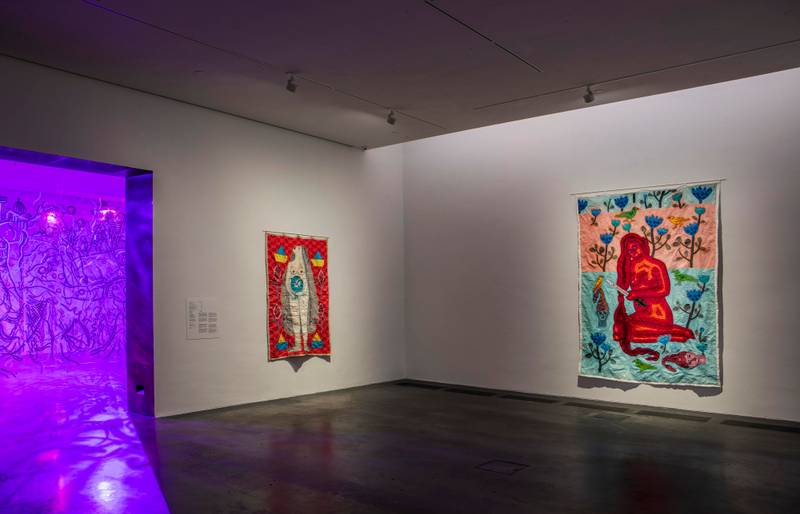

Kholod Hawash, Enemies from Four Sides, 2020
Photo: National Gallery / Petri Virtanen
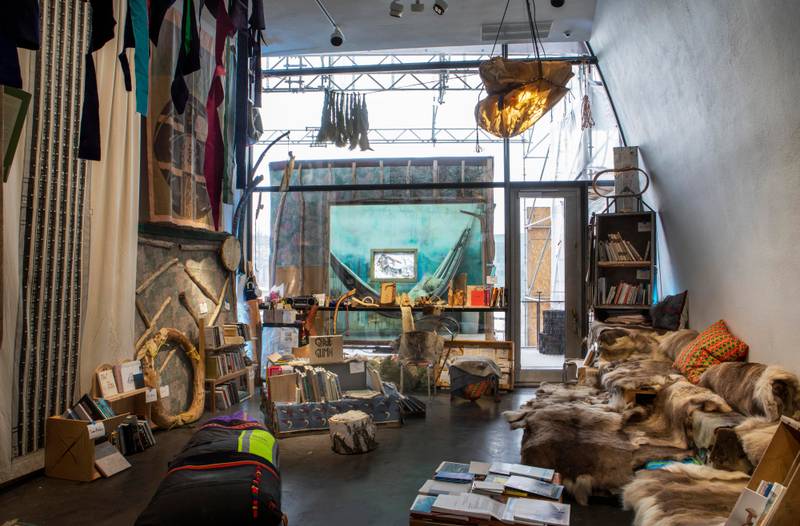

Joar Nangom Girjegumpi / Sámi Architecture Library, 2018
Courtesy of Joar Nango with Katarina Spik Skum, Anders Sunnah, Antaris Rimpi, Katrine Rugeldal, Astrid Fadnes, Eystein Talleraas, Håvard Arnhoff, Petter Tjikkom, Aqqalu Berthelsen
Photo: National Gallery / Petri Virtanen
It is one thing to claim to give a place for the articulation of the marginalized, the subaltern, the queer, the trans, the non-human, it’s another to do so when the institution itself is by and large none of those things. As viewers, it is our responsibility to question why institutions make such claims and whether or not diverse cultural interpretations can be present, or if such claims fall flat and only produce simplistic interpretations in their audiences without a deeper understanding of the issues at hand.
ARS22 features the works of Joar Nangom, whose work Girjagumpi/Sámi Architectural Library explicitly deals with indigenous knowledge and brings it into the belly of the beast, as it were, the national institution of a country that has actively sought to destroy that knowledge. This work is important for the Finnish context because while the artist is marked as Norwegian, the colonial context of Finnish history is very much tied with the Saami people. The work presents a library of writings, books, and essays which deal with various aspects of culture from a Saami perspective. This is a hub of knowledge, possibilities and hope for different ways of seeing and acting in the world. But it is a shame that there doesn’t seem to be any place in the exhibition where the views are put to practice, but it is only left to the audience to gaze at the books petrifying the living system of the library into surfaces which contain inaccessible knowledge11.
You can give a place for a voice, but unless you give that voice authority, nothing changes
I also want to discuss what I see as the second proposition of the catalogue and exhibition: that the subaltern can be meaningfully brought into the museum. But any such claims by the museum must not be taken at face value. It is one thing to claim to give a place for the articulation of the marginalized, the subaltern, the queer, the trans, the non-human, it’s another to do so when the institution itself is by and large none of those things. As viewers, it is our responsibility to question why institutions make such claims and whether or not diverse cultural interpretations can be present, or if such claims fall flat and only produce simplistic interpretations in their audiences without a deeper understanding of the issues at hand.
Therefore, is it possible for a white institution to say it presents the articulation of people of colour? Is it possible for a non-indigenous institution – which through its national identity participates in the theft of indigenous artifacts and bodies – to say it is giving a place to the ideas and thoughts of the indigenous people? How can an institution talk about the disappearance of universal value judgements and the need for diversity in values within society when it is the final harbinger of value judgements and its permanent staff, which wields this power, is itself not diverse? How does it claim to judge what “diversity” or the subaltern articulate and what of this articulation should be in a museum? What are these claims based upon? The choice of artists? The act itself of legitimizing a voice? Unless the very foundations of this system change, we are all just playing along. How far does an institution need to go to believe that it is helping with these issues and not only presenting them as things in the air which could go either way?
This exhibition proves without a shadow of a doubt that the building is simply not up for great-looking exhibition design and that the imagination of the curators is negatively affected by the spatial aspects of the building. It impedes the presentation of all artwork, regardless of how well thought out their placement is, and it makes many great works appear sad, cramped, and bulky. The walls weigh in on the pieces and enshroud them, leaving no lightness, no air.
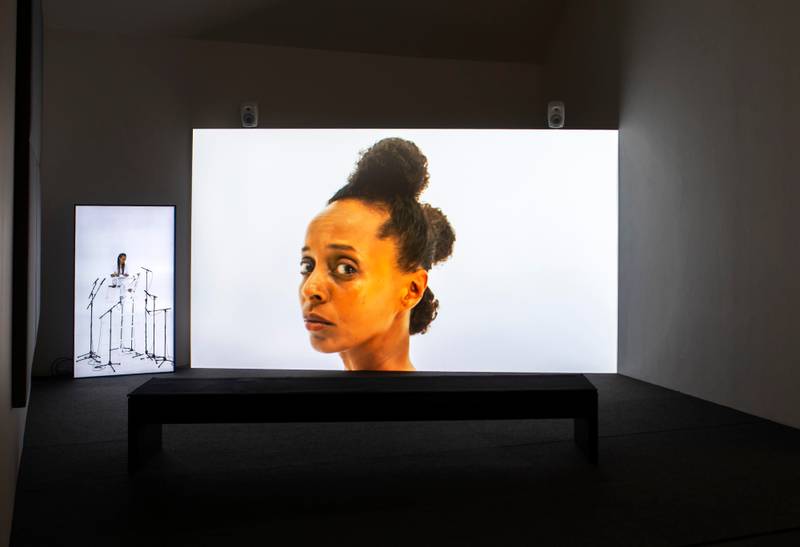

Grada Kilomba, ILLUSIONS Vol. III, Antigone, 2019
Courtesy of the artist and the Goodman Gallery
Photo: National Gallery / Petri Virtanen
Taking the best out of an experience
Before going into all the great things I saw at ARS22, it needs to be mentioned that there is a major problem with the exhibition spaces of Kiasma. This exhibition proves without a shadow of a doubt that the building is simply not up for great-looking exhibition design and that the imagination of the curators is negatively affected by the spatial aspects of the building. It impedes the presentation of all artwork, regardless of how well thought out their placement is, and it makes many great works appear sad, cramped, and bulky. The walls weigh in on the pieces and enshroud them, leaving no lightness, no air. For example, the fantastic but sensitive works of Joar Nango’s Girjagumpi/Sámi Architectural Library and Grada Kilomba’s Heroines, Birds, and Monsters suffer from this spatial devastation. This makes it even more challenging to separate the exhibition design and situated intent, which has brought amazing artworks into Finland, from the fact that the walls themselves just don’t work.
Even if I was slightly disappointed about how the exhibition doesn’t deliver the radicalism it aspires to, I found all the artworks curated into the exhibition fantastic and the texts inspiring. Despite the spatial issues and rushing people around me, what helped me view the exhibition was to take my time and really look and experience the artworks, sit through them, and get into the mental space they are presenting.


D Harding, International Rock Art Red, drawn from felt blankets / International rock art red, extracted from woollen felt, 2022
Courtesy the artist and Milani Gallery, Brisbane
Photo: National Gallery / Petri Virtanen
D. Harding’s paintings, done directly onto the walls of Kiasma, tangibly changed the museum’s environment. The almost unnoticeable traces of light brown and blue shades were perfectly invisible but visible, unnoticeable and fragile. I loved how one of them looks almost like mould and how this choice of placement and colour disrupts my aestheticising of the exhibition but also the building itself, almost asking me to consider if it were possible to create a museum in which real non-humans could live and breed while destroying artworks worth millions. The works told how our subjective attention hides the marginalised in plain sight and how we often don’t want to see something because it disrupts and suggests things that are not within the norm. The fact that these paintings were not labelled and the audience needed to discover and validate them as art reiterates this notion.
Laura Prouvost’s video work For Four Beauties also struck me. It had a haptic element in the heated room and soft surfaces where the video was located that made me feel like I was in a sauna (an element of the work), but also like I was in the womb and the interior of the body. This work starkly contrasted with most other works, which were surprisingly traditional and un-revolutionary, with the vast majority of the presented works being either paintings, sculptures, or videos. This traditionalism is, in fact, a point of criticism. Besides the performance program, the exhibition does not present any radical new forms of art, which I think previous editions of the ARS have prided themselves on.
Another work that impressed me is Arthur Jafa’s akingdomcomethas – a beautiful work about faith and transformation, especially self-transformation and acceptance, or as it is presented in position, the death of the old self and the rebirth of a new self. Let go of the “stink”, as one of the preachers says, of all the sins you have committed and accept that we can change and start again. I believe this is a vital message when people are under intense pressure to stay put, accept everything (including one’s self and identity), and forget that we can be born again, with or without religious connotations. The exhibition organises Jafa’s work at the end of a walk that appears to be about different autoethnographic artistic presentations in works like Joel Slotte’s paintings and Howardena Pindell’s video work Free, White, and 21. Simultaneously, akingdomcomethas presents the possibility of institutional transformation and calls for us to have hope and faith that we can forget our past and transform and that institutions can too. Perhaps it hints at letting the baddies off the hook and hoping for the possibility of resolution and restitution of what should have been from the start were it not for our failures.
Coming out of Jafa’s work, I was full of hope. Is ARS22 the first in a series of events that will establish it as the most significant contemporary art exhibition in Finnish history (if not the entire history of Finland)? Only the will of those inside the institution and those outside of it providing support to help make this a reality will tell whether this exhibition had the potential to push for an entirely new type of exhibition programming, formats, experimentation, and inclusion without othering – a place which morphs to the needs of diverse and various communities of people in the country without nationalistic ideals.
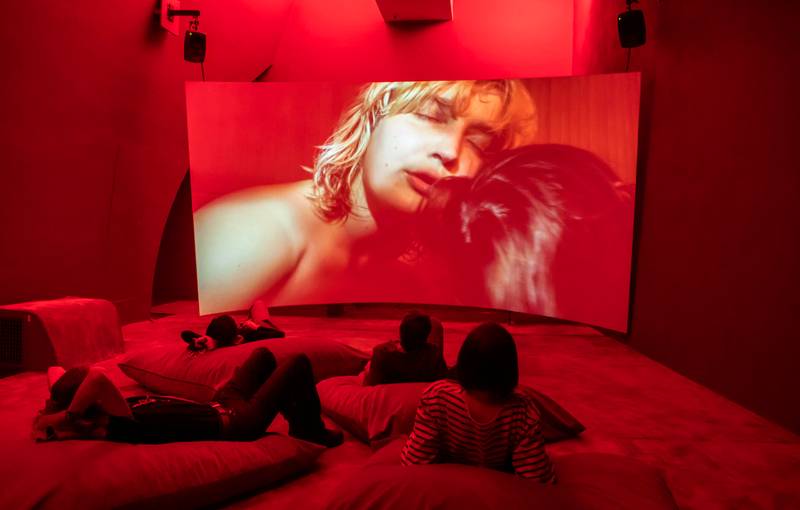

Laure Prouvost, From the Depth of Our Heart To the Depth of The See, 2022
Commissioned work, Kiasma / National Gallery and La Casa Encendida, Madrid The production has been supported by the Institut français de Finlande and the Hanasaari Swedish-Finnish Cultural Center
Photo: National Gallery / Petri Virtanen
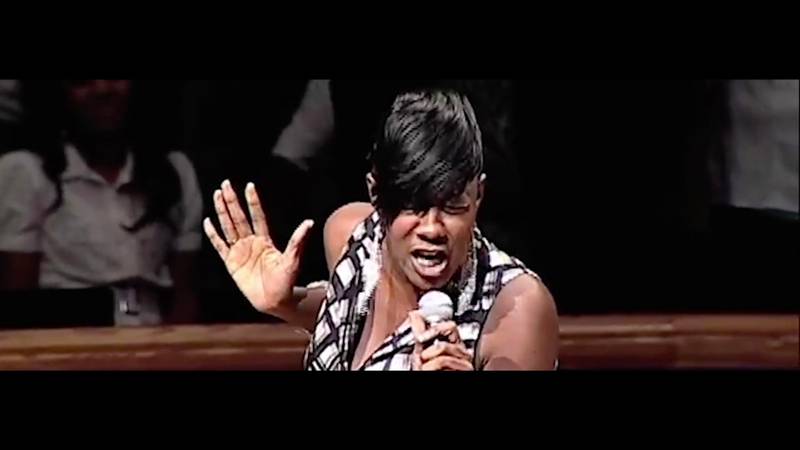

Arthur Jafa, akingdoncomethas, 2018
Courtesy of the artist and Gladstone Gallery, New York and Brussels
Photo: Video still © Arthur Jafa
